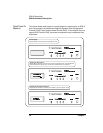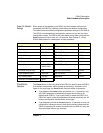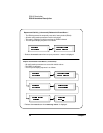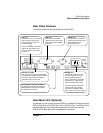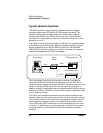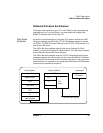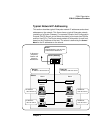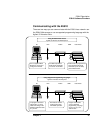
28 Chapter 1
E5810 Description
E5810 Software/Firmware
How IO Application
Software Works
With the E5810
Before trying to perform an I/O application operation on the E5810 GPIB
interface and the GPIB bus, the Remote IO Client software in the client
computer system establishes a network connection to the remote I/O server
(the E5810). Once the client establishes a connection, the client can begin to
send I/O requests to the E5810.
The E5810 (remote I/O server) can have multiple clients connected and
being serviced at any given time. The maximum number of concurrent client
connections depends on memory usage in the E5810, including the number
of clients and the number of current sessions running on those clients.
However, up to 16 client connections can be running concurrently. Thus, if
the maximum number of client connections to the E5810 has not been
exceeded, the connection is allowed to occur.
Although several instruments can be connected to the E5810 GPIB bus,
only one I/O application operation can occur on the GPIB bus at any given
time. Therefore, once a client’s request begins to execute on the GPIB, all
other client requests for operations on the GPIB must wait until the current
client request completes. Client requests are serviced in a first come, first
served manner, unless they are prohibited by interface or device locks.
If a client has a sequence of I/O application operations to perform that
should not be preempted, the client should obtain a lock on the E5810 GPIB
interface or device. Once the client’s sequence has completed, it should
release its lock, allowing access for other clients.
When a client closes a connection, the E5810 frees up the resources
allocated to that client, including any locks, pending I/O requests, memory
usage, etc.



